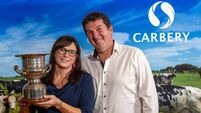The use of low emission slurry spreading (Less) equipment has resulted in a reduction of 7% in national ammonia emissions, Charlie McConalogue, the agriculture minister has said.
Responding to questions from Sinn Féin TD Matt Carthy, Mr McConalogue said the introduction of Less was “having a real impact”.
Through the targeted agriculture modernisation scheme (Tams), there has been just under €100m invested in Less machines and equipment in Ireland, leading to approximately 3,500 Less machines in the State, from a base of none between five and seven years ago.
Machines can cost up to €40,000 “but there is a tremendous number of them now”, Mr McConalogue said.
“It is a requirement now for all farmers in nitrates derogation to spread slurry using Less equipment,” he said.
“So far, it has resulted in a reduction of 7% in our national ammonia emissions.
“We are going to step this up a lot more significantly in the time ahead. It has great potential.”
Driver of reduced ammonia emissions
While the capital investment is more expensive, the department is putting grant aid into that and “ultimately it pays off in the utilisation of nitrogen and other ingredients in the slurry to grow grass and get it into the ground, where we want it to be”, Mr McConalogue explained.
“It needs to be spread at a rate that is most efficient so the grass grows while minimising in every way possible the impact on the environment around us.
“I look forward to continuing to step this out to support farmers to adopt this technology over the coming years.”
Over 99% of Ireland’s ammonia emissions originate from agriculture, mainly from animal waste and the application of synthetic fertilisers.
On average, ammonia emissions in agriculture showed some decline in 2020 relative to preceding years across all systems on a farm and per hectare basis, Teagasc’s National Farm Survey Sustainability Report for 2020 found.
The driver of reduced ammonia emissions is the increased adoption of Less, Teagasc noted.
In aggregate terms, 36% of all slurry applied used a Less approach in 2020, compared to just 16% in the previous year.
Mr Carthy said: “This is a great example that shows when farmers are given the technology and shown the alternative practices that can allow them to reduce emissions and reduce damage to water sources, they will embrace that.
“However, in the event that this machinery essentially becomes mandatory, Tams will not be available as a utilisation to ensure other farmers can get that.”
Mr McConalogue said that, where it was a requirement and an obligation on farmers to spread using Less, “we cannot grant aid compliance, even where it is a requirement for a farmer to use something to achieve compliance.”
He added: “What has happened in recent years is that we have made sure to give lead-in periods in advance of something becoming an obligation so farmers can prepare for that.
“In that advance period, they have been able to avail of grants.
“There are more than 3,000 low-emissions slurry spreading machines being used by farmers in derogation, who would have purchased them in advance and are now making strong use of them.
“Likewise, in regard to proposed changes to be made to the nitrates derogation, farmers will be given a lead-in time in order that they have advance notice to ensure support is available in advance of it becoming a requirement.”
Mr Carthy is advocating for an “exclusive scheme” on this issue.

Unlimited access. Half the price.
Try unlimited access from only €1.50 a week
Already a subscriber? Sign in










